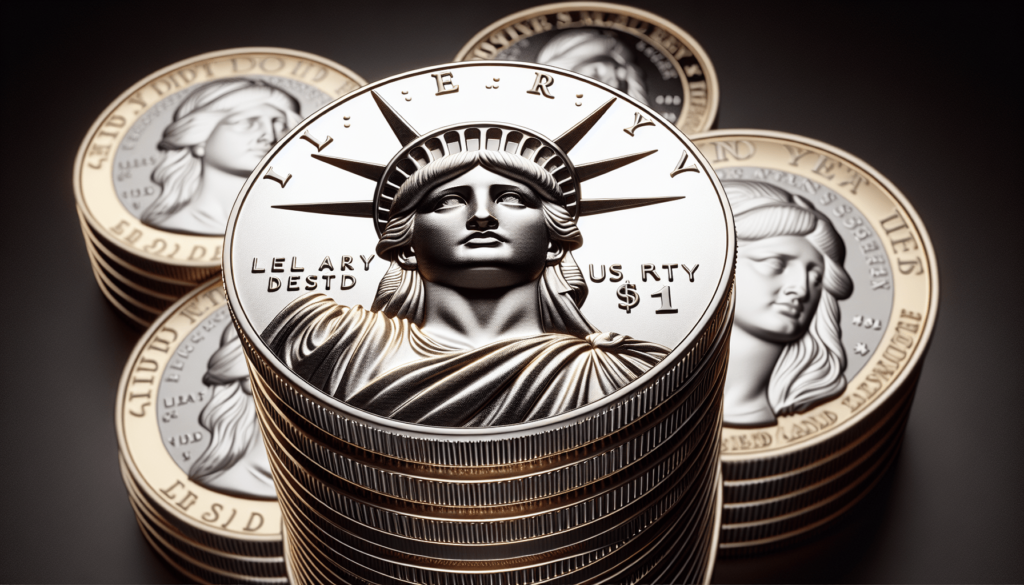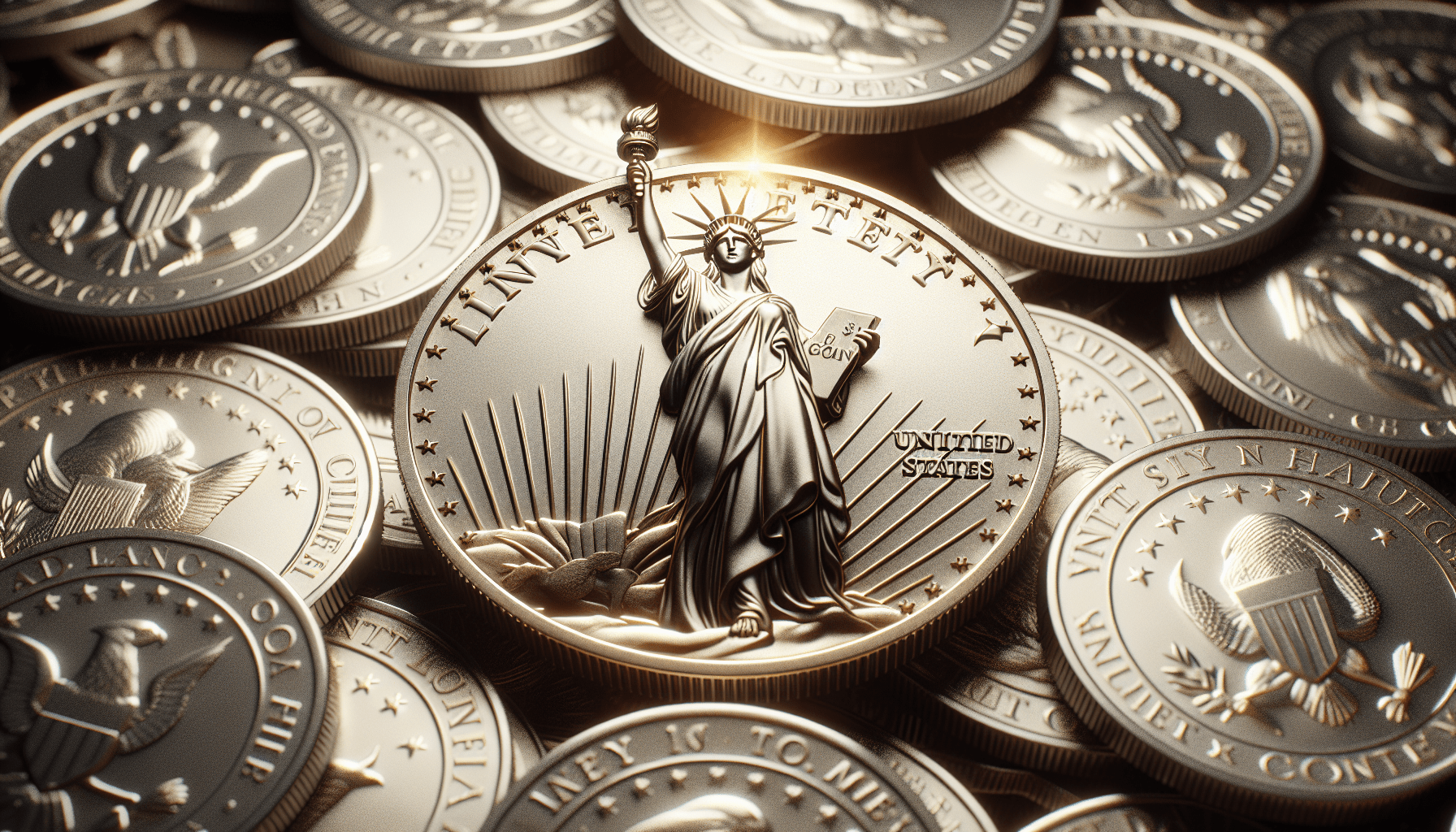You’ll be delighted to know that the US Mint is still producing $1 coins! Despite the rise of digital transactions, these coins maintain their relevance and are in circulation today. The US Mint continues to mint $1 coins as part of its currency production, ensuring that there is always a supply of these coins available for use. Whether you’re a collector or simply prefer using physical currency, you can rest assured knowing that the US Mint still values the production of $1 coins.
History of $1 Coins in the US
Introduction to $1 coins
$1 coins have played a significant role in the history of the United States. While the most commonly used denomination of currency in the US is the $1 bill, coins have also been minted and circulated. These coins have not only provided a convenient alternative to paper money, but they have also showcased the rich history and culture of the nation.
The creation of the US Mint
The production of $1 coins began with the establishment of the United States Mint. The US Mint was created in 1792 as a result of the Coinage Act, which was passed by Congress. Its purpose was to coin money and regulate its value. The US Mint has played a vital role in the creation of various denominations of coins, including the $1 coin.
The first $1 coin in the US
The first $1 coin in the US was minted in 1794 and featured a design known as the Flowing Hair Liberty. Made of 90% silver, this coin was relatively large and heavy. It showcased Lady Liberty with flowing hair on the obverse side and an eagle on the reverse. Despite its historical significance, the Flowing Hair Liberty $1 coin had a short-lived production, as it was eventually discontinued due to the high cost of silver.
The discontinuation of the silver $1 coin
In 1836, the minting of the silver $1 coin was officially discontinued due to the rising cost of silver and the availability of cheaper alternatives. However, silver dollars continued to be minted on a limited basis for use in international trade until they were completely halted in 1804.
The introduction of the Susan B. Anthony $1 coin
Following the discontinuation of the silver $1 coin, the US Mint introduced the Susan B. Anthony $1 coin in 1979. This copper-nickel coin featured a portrait of Susan B. Anthony, a prominent women’s suffrage leader, on the obverse side. However, the Susan B. Anthony $1 coin did not gain widespread popularity and was often confused with the quarter due to its similar size and color.
The Sacagawea $1 coin
In 2000, the US Mint unveiled the Sacagawea $1 coin as a tribute to the Shoshone woman who played a vital role as a guide during the Lewis and Clark expedition. This golden-colored coin featured Sacagawea with her infant son, Jean Baptiste, on the obverse side. The reverse side depicted an eagle in flight. The Sacagawea $1 coin aimed to honor Native American contributions to US history.
The introduction of the Presidential $1 coin series
In 2007, the US Mint launched the Presidential $1 coin series. This initiative honored the nation’s past presidents by featuring a different president on the obverse side of the coin each year. The reverse side of the coin depicted the Statue of Liberty. The Presidential $1 coin series contributed to promoting awareness and appreciation for the country’s leaders and their significant contributions.
The Native American $1 coin
Concurrent with the Presidential $1 coin series, the US Mint introduced the Native American $1 coin in 2009. The obverse side of this coin showcased a prominent Native American figure, while the reverse side displayed an image symbolizing Native American contributions to United States history.
The end of traditional $1 coin production
While $1 coins, such as the Presidential and Native American series, continued to be minted, the US Mint ceased production of dollar coins for general circulation in 2011. This decision was primarily driven by the lack of demand and the surplus of unused coins already in circulation.

The Current State of $1 Coins
The presence of $1 coins in circulation
Although $1 coins are no longer commonly used in everyday transactions, they still exist in circulation. While the number of $1 coins in circulation is relatively small compared to other denominations, they can still be obtained and used for various purposes.
The benefits of $1 coins
$1 coins offer several advantages over their paper counterparts. Firstly, they are more durable, lasting significantly longer than paper bills. This durability translates to cost savings for the US government, as the need for constant replacement and re-printing of paper bills is reduced. Additionally, $1 coins are environmentally friendly, as their longer lifespan contributes to reduced paper waste.
The drawbacks of $1 coins
Despite their advantages, $1 coins also have some drawbacks. One of the main challenges is the lack of public acceptance and awareness. Many individuals are not accustomed to carrying and using $1 coins, leading to a limited circulation. Furthermore, due to their relatively large size and weight compared to paper bills, $1 coins may be perceived as less convenient for carrying in wallets or pockets.
The role of the US Mint in producing $1 coins
The US Mint continues to play a significant role in producing $1 coins, albeit in smaller quantities. While $1 coins for general circulation are no longer minted, the US Mint still produces collector’s edition $1 coins that cater to the numismatic community and coin enthusiasts. These collector’s edition coins often feature unique designs and limited mintage, making them highly sought after by collectors and enthusiasts.
The production of collector’s edition $1 coins
Collector’s edition $1 coins are minted in limited quantities and are often made of precious metals such as gold or silver. These coins are typically produced to commemorate significant events, historical figures, or cultural milestones. Collector’s edition $1 coins not only cater to avid collectors but also serve as valuable keepsakes and investment pieces.
The availability of $1 coins from the US Mint
While $1 coins for general circulation may be less common, individuals interested in obtaining $1 coins can still acquire them directly from the US Mint. The US Mint offers a range of coins for sale, including $1 coins, through its website and authorized dealers. This accessibility allows individuals to expand their coin collections, support the US Mint’s operations, and own a piece of American history.
The overall demand for $1 coins
While the demand for $1 coins for general circulation has been low, there remains a niche market for $1 coins among collectors, numismatists, and individuals interested in owning unique and valuable pieces. The limited mintage and distinct designs of certain $1 coins make them highly sought after by collectors, contributing to a steady demand in the collector’s market.

The Future of $1 Coins
The potential for new $1 coin designs
As the US Mint continues to produce collector’s edition $1 coins, there is a potential for new and innovative coin designs. These designs could feature significant historical events, cultural icons, or technological advancements. By incorporating new and exciting designs, the US Mint can capture the attention and interest of both collectors and individuals who appreciate the artistry of coinage.
The possibility of new $1 coin series
Building upon the success of the Presidential $1 coin and Native American $1 coin series, there is a possibility for the introduction of new $1 coin series. These series could focus on specific themes, such as American landmarks, influential women in history, or important milestones in the nation’s development. By expanding the range of $1 coin series, the US Mint can engage a broader audience and promote a deeper understanding of the country’s heritage.
The role of $1 coins in a cashless society
In an increasingly digital and cashless society, the role of $1 coins may evolve. While paper bills remain the dominant form of currency, $1 coins can still have a place as collectibles, souvenirs, or commemorative items. Additionally, $1 coins may continue to be used in certain industries or vending machines where the need for physical currency remains. Ultimately, the future of $1 coins will be shaped by the changing dynamics of currency and the evolving needs and preferences of the public.
In conclusion, the history of $1 coins in the US is a fascinating journey that showcases the development of currency and the reflection of the nation’s history and values. Although the use of $1 coins for general circulation has diminished over time, their significance as collector’s items and cultural artifacts remains strong. The US Mint continues to produce $1 coins, catering to both collectors and individuals interested in owning a piece of American history. With potential new designs and series on the horizon, the future of $1 coins holds exciting possibilities for the numismatic community and coin enthusiasts alike.

